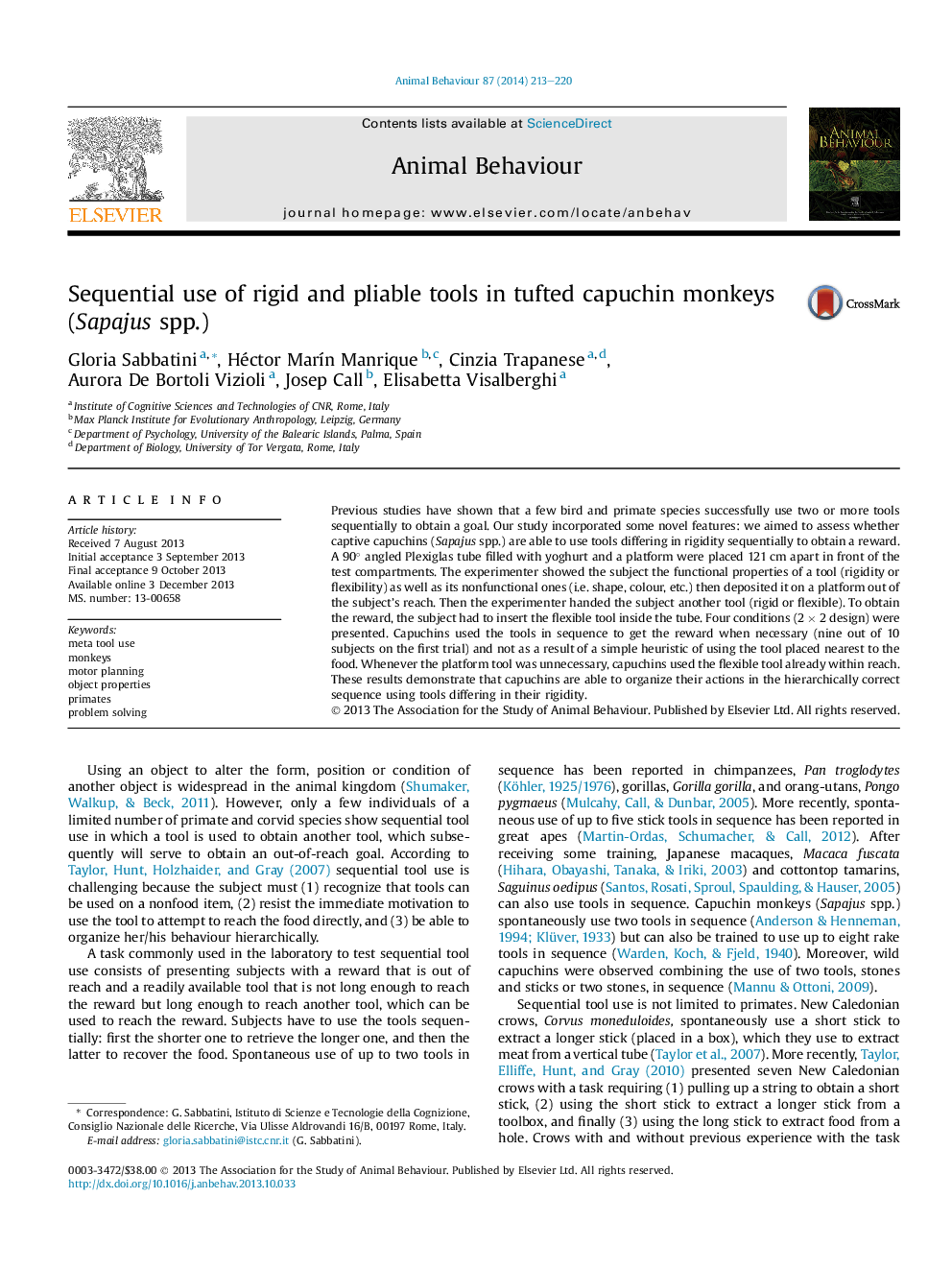| Article ID | Journal | Published Year | Pages | File Type |
|---|---|---|---|---|
| 8490864 | Animal Behaviour | 2014 | 8 Pages |
Abstract
Previous studies have shown that a few bird and primate species successfully use two or more tools sequentially to obtain a goal. Our study incorporated some novel features: we aimed to assess whether captive capuchins (Sapajus spp.) are able to use tools differing in rigidity sequentially to obtain a reward. A 90° angled Plexiglas tube filled with yoghurt and a platform were placed 121 cm apart in front of the test compartments. The experimenter showed the subject the functional properties of a tool (rigidity or flexibility) as well as its nonfunctional ones (i.e. shape, colour, etc.) then deposited it on a platform out of the subject's reach. Then the experimenter handed the subject another tool (rigid or flexible). To obtain the reward, the subject had to insert the flexible tool inside the tube. Four conditions (2 Ã 2 design) were presented. Capuchins used the tools in sequence to get the reward when necessary (nine out of 10 subjects on the first trial) and not as a result of a simple heuristic of using the tool placed nearest to the food. Whenever the platform tool was unnecessary, capuchins used the flexible tool already within reach. These results demonstrate that capuchins are able to organize their actions in the hierarchically correct sequence using tools differing in their rigidity.
Related Topics
Life Sciences
Agricultural and Biological Sciences
Animal Science and Zoology
Authors
Gloria Sabbatini, Héctor MarÃn Manrique, Cinzia Trapanese, Aurora De Bortoli Vizioli, Josep Call, Elisabetta Visalberghi,
